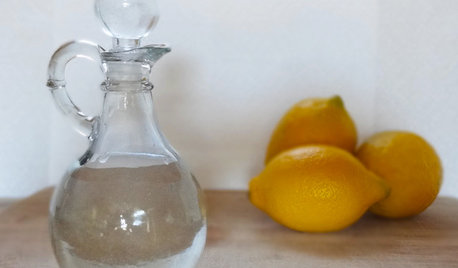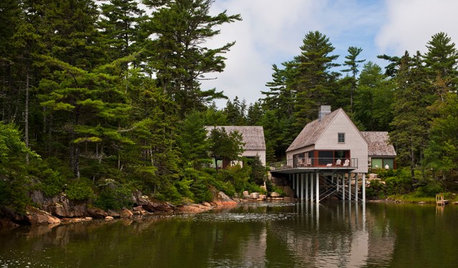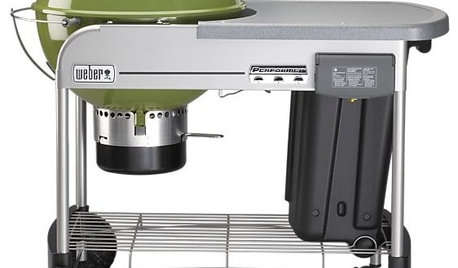Have I just made vinegar instead of cider?
2ajsmama
13 years ago
Related Stories

HOUSEKEEPINGVinegar and Voilà: Clean Your House the Natural Way
Ditch the commercial cleaners for nontoxic, inexpensive and versatile white vinegar
Full Story
COLOR7 Inky Colors to Use Instead of Black
Is black too stark and dramatic for your taste? Try navy, charcoal, chocolate or another alternative for a deep, moody space with character
Full Story
KITCHEN DESIGN15 Farmhouse Kitchens That Made Us Swoon This Month
Raw wood, natural light, shiplap siding — we just couldn’t get enough of these farmhouse-style kitchens uploaded to Houzz in January
Full Story
ARCHITECTUREIt Takes a Village: 2 Homes Made of Multiple Structures
Separate buildings join in style and intention in these home bases, showing that sometimes more is just right
Full Story
THE ART OF ARCHITECTUREBack of an Envelope: Architects’ Sketches and the Homes They’ve Made
There’s something evocative about a hand-drawn architectural sketch that a computer just can’t replicate. Here are some great examples
Full Story
GARDENING AND LANDSCAPINGMade in the Shade, the Modern Way
Think beyond the patio umbrella with these 8 ideas for blocking the sun beautifully
Full Story
TINY HOUSESHouzz Tour: A Custom-Made Tiny House for Skiing and Hiking
Ethan Waldman quit his job, left his large house and spent $42,000 to build a 200-square-foot home that costs him $100 a month to live in
Full Story
BEDROOMS13 Simple Steps to a Perfectly Made Bed
Drift off to dreamland in a delightfully soothing, artfully dressed bed worthy of a posh hotel
Full Story
Guest Picks: Made in the U.S.A
Ellen of Nouveau Stitch Finds Great Home Decor Products Made in America
Full Story
LIGHTING12 Fun Light Fixtures Made From Found Objects
Trash became treasure in these one-of-a-kind lights. See if they inspire your own DIY pendant project
Full Story




Michael
justjohn
Related Discussions
Jock itch and Apple Cider Vinegar
Q
Hard Cider into Apple Cider Vinegar
Q
Braggs Apple Cider Vinegar
Q
apple cider vinegar and plain vinegar
Q
2ajsmamaOriginal Author
marknmt
windfall_rob
2ajsmamaOriginal Author
justjohn
beeman_gardener
sage721
2ajsmamaOriginal Author
beeman_gardener
calistoga_al ca 15 usda 9
2ajsmamaOriginal Author
sage721
sage721
justjohn
glib
sage721
2ajsmamaOriginal Author
glib
2ajsmamaOriginal Author
glib
2ajsmamaOriginal Author
beeman_gardener
2ajsmamaOriginal Author
2ajsmamaOriginal Author
john_in_sc
2ajsmamaOriginal Author
hillbilly_hydro
john_in_sc